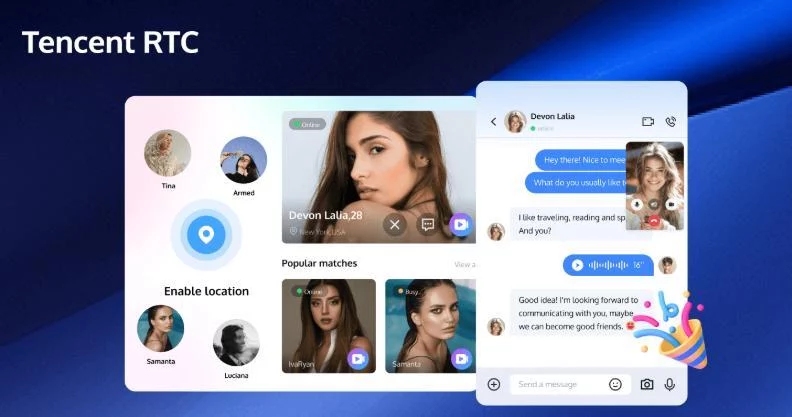Screens have become our windows to the world, transforming how we work, learn, and connect. Video chat, once a novelty, is now as essential as electricity for many people. Whether it’s a 1v1 chat with a close friend, a virtual family reunion, or a remote work meeting, this technology has erased geographical barriers and redefined daily routines. The pandemic accelerated its adoption, but even as life normalizes, video calling remains a staple in modern communication. In this article, we’ll explore how video chat reshaped work, personal relationships, education, and healthcare—making life more flexible, connected, and efficient.
The Work Transformation: Office Without Walls
Gone are the days when commuting was mandatory for productivity. Video chat turned kitchens, coffee shops, and living rooms into viable workspaces. Businesses now hire talent globally without relocation costs, while employees enjoy better work-life balance. A designer in Tokyo can present ideas to a client in New York without booking a flight, and a software team spread across three continents can troubleshoot issues in real time. Meetings are more inclusive too. Shy employees who hesitated to speak up in conference rooms often contribute more via chat functions or virtual hand-raising. Recorded calls allow absent colleagues to catch up, reducing miscommunication. However, this shift isn’t flawless—long video calls can cause fatigue, and some companies struggle to maintain team cohesion. The key is balance: using video for collaboration while respecting focus time offline.
Personal Connections in the Digital Age
Families Stay Close Across Continents
Grandparents now read bedtime stories to grandchildren via video chat, and siblings separated by time zones share meals virtually. Platforms with group calling features let entire families gather for holidays, birthdays, or even casual Sunday catch-ups. For military families or expatriates, these tools soften the ache of distance. A parent traveling for work can still attend a child’s school play through a live stream, and elderly relatives who can’t travel remain part of daily life.
Virtual Socializing: The New Normal
Book clubs, game nights, and fitness classes moved online during lockdowns—and many stayed there. Friends separated by busy schedules or different cities now host wine tastings or movie nights over video chat. Even grief support groups and hobbyist communities (like knitting circles or language exchanges) thrive online. The convenience is undeniable: no commuting, no dress code, and the ability to join from anywhere.
Dating Goes Digital
First dates now often happen via video chat, saving time and money while reducing safety concerns. Couples in long-distance relationships maintain intimacy through shared virtual activities, from cooking together to watching the same movie while video calling. Some even use screen-sharing to browse travel destinations or plan future visits. While nothing replaces physical chemistry, video calls help people gauge compatibility before investing in an in-person meeting.
Education Reimagined
Students in rural areas now access top-tier lectures via live-streamed classes, while professionals upskill through recorded webinars. Tutoring sessions moved online, letting kids learn at their own pace with pause and rewind functions. During snow days or illnesses, video chat keeps education uninterrupted. Teachers use breakout rooms for group projects and interactive whiteboards for dynamic lessons. Shy students participate more via chat, and recorded lectures help non-native speakers review material slowly. However, challenges remain: not all households have stable internet, and younger children struggle with screen fatigue. Hybrid models—mixing online and in-person learning—may be the future.
Healthcare at Your Fingertips
Doctors now diagnose rashes, review lab results, and provide therapy sessions via video chat. Patients save hours in waiting rooms, and those with mobility issues or contagious illnesses avoid stressful trips to clinics. Mental health care became far more accessible—therapy apps connect users to licensed professionals within minutes, breaking stigma and geographical barriers. Post-surgery follow-ups, chronic disease management, and even physical therapy (with real-time movement corrections) work well remotely. However, emergencies and hands-on exams still require in-person visits. The ideal system blends both: routine check-ins online, with clinics reserved for critical care.
Conclusion
Video chat isn’t just a temporary fix—it’s a permanent upgrade to how we live. It makes work flexible, keeps families close, democratizes education, and simplifies healthcare. The next advancements may include holographic calls, real-time translation for multilingual conversations, or VR-powered virtual gatherings that mimic physical presence. Yet, the human element remains vital. Technology should enhance—not replace—face-to-face bonds. By using video chat thoughtfully (turning off cameras sometimes to reduce fatigue, setting boundaries for work calls), we can enjoy its benefits without burnout. One thing is certain: screens will keep connecting us, but it’s up to us to keep those connections meaningful.

Lexy Summer is a talented writer with a deep passion for the art of language and storytelling. With a background in editing and content creation, Lexy has honed her skills in crafting clear, engaging, and grammatically flawless writing.



